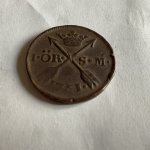C
Cappy Z.
Guest
I printed a copy of the DOI and attempted to number the entire document. It appears to have 1322 words.
Interesting that the highest number used in the Beale paper #2(Treasure description) is only 1005. Why number the remain 317?
The page of 'where' aka #1 the highest number used is 2906. And only once. Obviously 'where' is not the DOI. (It only has 1322 words)
And finally the 'name and residences' page #3 the highest number is only 952. Maybe he got tired?
Once you sit down and actually number words..it gets real tiresome and the question arises Why number all they way to 2906 (an actual number used) if the entire alphabet is covered in the first several hundred words? Doesn't make sense UNLESS there is a clue hidden here.
Could it be Beale Code #1 has a maximum of 2906 words? I used the internet and found that some early English law pamphlets keep referring to 2906.
Interesting that the highest number used in the Beale paper #2(Treasure description) is only 1005. Why number the remain 317?
The page of 'where' aka #1 the highest number used is 2906. And only once. Obviously 'where' is not the DOI. (It only has 1322 words)
And finally the 'name and residences' page #3 the highest number is only 952. Maybe he got tired?
Once you sit down and actually number words..it gets real tiresome and the question arises Why number all they way to 2906 (an actual number used) if the entire alphabet is covered in the first several hundred words? Doesn't make sense UNLESS there is a clue hidden here.
Could it be Beale Code #1 has a maximum of 2906 words? I used the internet and found that some early English law pamphlets keep referring to 2906.









